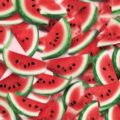Discovering Hidden Nutrition in Food Scraps
We’ve all been there – tossing away vegetable peels, fruit cores, and other food scraps without a second thought. But what if those “inedible” bits were actually secret nutritional powerhouses just waiting to be utilized? Reducing food waste not only helps the environment, but can also boost our health and expand our culinary horizons in surprising ways. Let’s explore some common food scraps you may have been overlooking and learn how to transform them into delicious, nourishing additions to your meals.
Veggie Peels: A Treasure Trove of Nutrients
Those potato skins and carrot peels you’ve been tossing in the compost? They’re actually packed with fiber, vitamins and minerals. Try roasting potato skins with olive oil and spices for a crunchy snack. Carrot peels can be simmered into vegetable stock or blended into smoothies for an antioxidant boost. Even onion skins, usually discarded without a thought, can be used to add rich color and flavor to homemade broths.
Cucumber peels are another often-overlooked gem. Rich in vitamin K and silica, they can be pickled for a tangy condiment or blended into refreshing summer drinks. And don’t forget about those nutrient-dense beet greens – sauté them as you would spinach or kale for a side dish bursting with vitamins A, C and iron.
Fruit Scraps: Sweet Surprises
When it comes to fruit, we often discard some of the most beneficial parts. Citrus peels, for instance, contain more vitamin C than the fruit itself. Try zesting lemon, lime or orange peels into baked goods or salad dressings for a flavor and nutrition boost. You can even candy citrus peels for a sweet treat.
Apple cores and peels are rich in pectin and antioxidants. Instead of tossing them, simmer them with cinnamon and honey to make a nutritious homemade apple syrup. Watermelon rinds, often relegated to the compost bin, can be pickled or stir-fried for a refreshing, crunchy addition to summer meals.
Stems and Stalks: Don’t Toss These Treasures
Broccoli stalks and kale stems might seem tough and unappetizing, but they’re actually incredibly versatile. Peel and slice broccoli stalks to use in stir-fries or salads – they’re milder and sweeter than the florets. Kale stems can be finely chopped and added to soups or stews for extra fiber and nutrients.
Cilantro and parsley stems are often discarded, but they’re packed with flavor. Chop them finely and use them alongside the leaves in salsas, pesto, or chimichurri sauce. Even tough asparagus ends can be saved – simmer them to make a creamy asparagus soup.
Seeds and Pits: Tiny Nutritional Powerhouses
Don’t overlook the seeds and pits of your favorite fruits and vegetables. Pumpkin and squash seeds can be roasted for a crunchy, protein-rich snack. Apple and pear seeds contain beneficial compounds (though they should be consumed in moderation). Even avocado pits can be dried, ground, and used as a nutrient-dense powder in smoothies.
Watermelon seeds are another often-overlooked superfood. Rich in protein, healthy fats, and minerals, they can be roasted and eaten like sunflower seeds or ground into flour for baking. Stone fruit pits, while not edible themselves, can be used to infuse flavor into liqueurs or jams.
Embracing the Whole Food: Tips for Reducing Waste
Incorporating these often-discarded food parts into your diet isn’t just about nutrition – it’s about developing a more mindful, sustainable approach to eating. Here are some tips to help you make the most of your food:
- Plan your meals to use all parts of your produce
- Store scraps in the freezer until you’re ready to use them
- Invest in a good blender or food processor to easily incorporate scraps into smoothies, sauces, and more
- Experiment with new recipes that utilize typically discarded parts
- Start a small herb garden to always have fresh stems on hand
Remember, reducing food waste isn’t about forcing yourself to eat things you don’t enjoy. It’s about expanding your culinary horizons, nourishing your body, and cultivating a deeper appreciation for the food we eat. Every small step towards reducing waste contributes to a healthier planet and a more sustainable food system.
FAQ: Eating Inedible Food Scraps
1. Is it safe to eat food scraps that are usually discarded?
Most food scraps from fruits and vegetables are safe to eat. However, always ensure they’re thoroughly washed and free from mold or decay. Some parts, like rhubarb leaves or apple seeds in large quantities, can be harmful, so it’s important to research before consuming unfamiliar parts.
2. How can I incorporate food scraps into my cooking without affecting taste?
Start by adding small amounts to dishes you already enjoy. Blend vegetable peels into smoothies, use fruit scraps in baked goods, or add chopped stems to soups and stews. Experiment to find combinations you enjoy.
3. Are there any food scraps that are particularly nutritious?
Many food scraps are nutritional powerhouses. Broccoli stalks are high in fiber and vitamin C, citrus peels are rich in antioxidants, and beet greens are packed with vitamins and minerals. Always research the specific nutritional benefits of each food part.
4. How can I store food scraps for later use?
Most scraps can be stored in airtight containers in the refrigerator for a few days. For longer storage, clean and dry scraps thoroughly, then freeze them in freezer bags. Label with the date and use within 3-6 months for best quality.
5. What if I can’t use all my food scraps in cooking?
If you can’t use all your scraps in cooking, consider composting them. This reduces waste and creates nutrient-rich soil for gardening. Some scraps can also be used for natural cleaning or beauty treatments, like using lemon peels to freshen garbage disposals or avocado pits for a natural fabric dye.









